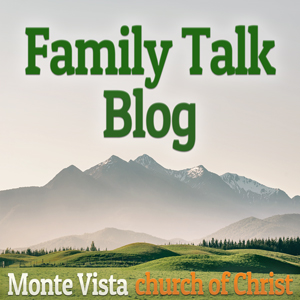What We Believe — Scripture
A few years ago, a debate over red meat being healthy arose. Many turned to a vegetarian or vegan diet. Some energetic entrepreneurs tried to claim that Jesus was a vegetarian because of the “pure” life He lived, claiming that a pure body included a blood-free diet. Being in ignorance of the “kosher” preparations dictated by the Law of Moses, they assumed Jesus would not consume animals. They quoted the Law to abstain from blood (Leviticus 3:17) and, as the apostles wrote, gentiles also should “abstain from things contaminated by idols and from fornication and from what is strangled and from blood” (Acts 15:19-21). Jesus participated in the feasts and ate the meats prepared according to the Law.
A similar lack of scriptural knowledge caused many to believe the fabrications made by the Gnostic writers that planted the idea that Jesus had a consort, that that consort was Mary Magdalene, and that Mary and Jesus were married. The false belief that some families have direct descendants from Mary and her union with Jesus has produced several books describing the investigation into the claims. The public interest started with “The DaVinci Code,” written by Dan Brown. Many more people saw the movie by the same name, and the many false statements about Catholic organizations and ancient family histories surged through newspapers and TV documentaries.
The big question for a Christian is, “How does the Bible identify the various women named Mary in the New Testament.” There was and is an etiquette practiced by the citizens of the time, and used by the writers of scripture, to identify married and unmarried women. Notice in the following verses; one is named as “the wife of,” others “the mother of.” thereby indicating they were married or widowed. There are also three unmarried women mentioned. The town of birth, relation as a sister, or no further indication of relationship was necessary in the case of Salome.
“Among them was Mary Magdalene, and Mary the mother of James and Joseph, and the mother of the sons of Zebedee” (Matthew 27:56).
“But standing by the cross of Jesus were His mother, and His mother’s sister, Mary the wife of Clopas, and Mary Magdalene” (John 19:25).
“There were also some women looking on from a distance, among whom were Mary Magdalene, and Mary the mother of James the Less and Joses, and Salome” (Mark 15:40).
“When the Sabbath was over, Mary Magdalene, and Mary the mother of James, and Salome, bought spices, so that they might come and anoint Him” (Mark 16:1).
From the way they are listed, Mary Magdalene, Jesus’ aunt, and Salome were not married. As disciples interested in the death and burial of Jesus, they may have all been part of those that followed Him during His days of travel and preaching. “When He was in Galilee, they used to follow Him and minister to Him; and there were many other women who came up with Him to Jerusalem” (Mark 15:41).
We read the same style of identification used for the woman Lydia. “A woman named Lydia, from the city of Thyatira, a seller of purple fabrics, a worshiper of God, was listening; and the Lord opened her heart to respond to the things spoken by Paul. And when she and her household had been baptized, she urged us, saying, “If you have judged me to be faithful to the Lord, come into my house and stay.” (Acts 16:14-16). The narrative identifies her according to her town, occupation, and house. She is, therefore, a woman who has never been married.
The answer to the question about Jesus’ marital status is that the scriptures do not say He was! If the scriptures are silent, and the grammar does not indicate otherwise, the answer is, No, Jesus was not married.
